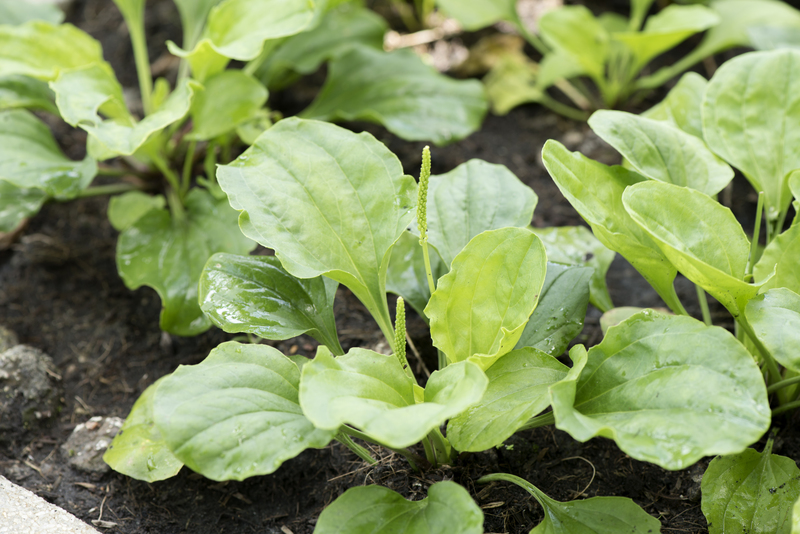How Community Gardening Can Drive Climate Change Action
Posted on 19/08/2025
How Community Gardening Can Drive Climate Change Action
The world is facing one of its greatest challenges: climate change. Global warming, deforestation, biodiversity loss, and changing weather patterns threaten both nature and human society. While these problems may seem overwhelming, communities have a powerful tool at their disposal -- community gardening. This article explores how community gardening can be a catalyst for climate change action, transforming neighborhoods while helping the planet.

Understanding Community Gardening
Community gardens are shared spaces where people come together to grow fruits, vegetables, flowers, and plants. These green oases spring up in city lots, schools, neighborhoods, and even rooftops. But, community gardening is far more than soil and seeds -- it's a movement that builds connections and empowers people to take positive action for the environment.
Key Principles of Community Gardening
- Shared Responsibility: Community members maintain the garden together, sharing both the bounty and the workload.
- Education: Gardens provide hands-on learning, teaching everything from composting to water conservation.
- Inclusivity: Anyone can participate, regardless of age, background, or gardening experience.
- Ecological Awareness: Many gardens promote organic practices, pollinator-friendly plants, and wildlife habitats.
Linking Community Gardening and Climate Change Action
Climate change action encompasses efforts to reduce greenhouse gas emissions, adapt to new climate realities, and build resilience in communities. Community gardening supports all these objectives in surprisingly powerful ways. Let's examine multiple mechanisms by which gardening at the community level can help tackle climate change.
1. Carbon Sequestration through Green Spaces
Plants capture carbon dioxide (CO2) from the atmosphere through photosynthesis. By increasing the number of plants, especially in densely built cities, community gardens help draw down carbon emissions. Healthy soils within these gardens further lock away even more carbon.
- Trees, shrubs, and perennial plants in gardens absorb and store carbon for years.
- Composting organic waste in gardens boosts soil's ability to capture carbon, while reducing methane emissions from landfills.
- Soil enrichment increases organic matter, creating a long-term carbon sink.
2. Promoting Local Food and Reducing Food Miles
Did you know the average meal travels over 1,500 miles before reaching your plate? Community gardening helps address this by enabling the local production of food. When we grow and consume food in our own neighborhoods:
- Transportation emissions are minimized, reducing the carbon footprint linked to long-distance shipping.
- Pesticide and fertilizer use can be better controlled, favoring organic and sustainable practices.
- Food waste is reduced because produce is fresh, accessible, and can be harvested as needed.
Gardening communities often share their surplus, donate to food banks, and support local economies -- creating a more resilient, sustainable food system.
3. Building Climate Resilience in Urban Areas
Urban heat islands make cities hotter, leading to increased energy use for air conditioning and greater vulnerability to heat waves. Community gardens offer natural solutions:
- Cooling effects: Plants shade buildings, release water vapor, and lower local temperatures.
- Stormwater management: Gardens absorb rainfall, reducing flood risks and easing pressure on storm drains.
- Wildlife havens: Gardens attract pollinators and provide habitat for native species threatened by urban development.
By harnessing these benefits, community gardeners can turn concrete jungles into climate-smart cities.
4. Spreading Environmental Awareness and Mobilizing Action
Community gardening offers a unique space for education, outreach, and collective advocacy. Gardens become outdoor classrooms, teaching people about conservation, carbon reduction, and sustainable lifestyles.
- Children learn about plant life cycles, ecosystems, and where food comes from.
- Workshops teach practical skills like composting, energy-saving gardening, and eco-friendly landscaping.
- Community engagement projects inspire youth and adults alike to become climate leaders.
This groundswell of grassroots action translates to greater public support for climate mitigation and adaptation policies at the local, regional, and even national levels.
5. Reducing Waste through Composting and Recycling
A vital part of many community gardening projects is managing organic waste. Composting scraps from gardens and homes:
- Diverts waste from landfills, lowering methane emissions.
- Returns nutrients to the soil, enhancing fertility and productivity.
- Reduces the need for synthetic fertilizers, which are energy-intensive to produce.
Moreover, community gardens often encourage reuse of materials -- from upcycled planters to rain barrels -- further lowering their environmental impact.
Case Studies: Community Gardens Fighting Climate Change
To appreciate the real-world impact of community gardening on climate action, let's highlight a few inspiring examples worldwide.
A. The Incredible Edible Movement (United Kingdom)
Started in Todmorden, England, this grassroots initiative has transformed public spaces into edible gardens managed by the community. Local food production lowers emissions, educates citizens, and fosters a powerful sense of responsibility for the environment.
B. The GreenThumb Program (New York City)
With more than 600 community gardens across the city, GreenThumb is a model of urban climate adaptation. Gardens managed by neighbors absorb stormwater, reduce summer heat, and produce tons of local vegetables every year.
C. Nairobi Urban Farming (Kenya)
Faced with rapid urbanization and food insecurity, Nairobi's community gardens demonstrate how urban agriculture can feed cities, boost resilience, and reduce climate vulnerabilities. Many projects focus on composting, rain-water collection, and indigenous seeds.
Best Practices for Climate-Friendly Community Gardens
How can gardeners maximize their impact in the battle against climate change? Here are evidence-based strategies for effective, climate-action-oriented gardens:
- Prioritize native and drought-tolerant species: Plants adapted to local conditions need less water and are more resilient.
- Embrace organic and regenerative gardening practices: Minimize pesticides, tilling, and synthetic fertilizers to maintain soil health and biodiversity.
- Practice efficient water use: Install rain barrels, mulching, and drip irrigation to conserve precious resources.
- Foster community partnerships: Collaborate with schools, environmental groups, and local businesses to expand the garden's reach.
- Engage in climate education and advocacy: Host workshops, support policy change, and encourage civic involvement to push for sustainable urban planning.
- Measure and share your impact: Track your harvest, calculate CO2 savings, and share success stories to inspire others.
Breaking Down Barriers: Making Community Gardening More Accessible
While community gardening holds tremendous promise in advancing climate action, it's important to acknowledge and address barriers such as limited green space, restrictive policies, or socioeconomic disparities. Solutions include:
- Transforming vacant lots and rooftops into productive gardens.
- Lobbying for supportive policies that protect green spaces and prioritize urban agriculture.
- Securing funding through grants, crowd-sourcing, or local businesses to ensure that gardens are sustainable and inclusive.
- Building diverse leadership teams that reflect the neighborhood's demographics and foster equity.
- Utilizing vertical farming and container gardening where ground space is limited.
A thriving community garden should be a resource for all, serving as a model for inclusive climate change action and environmental justice.
The Ripple Effect: Scaling Up Community Gardening for Global Impact
The impact of a single community garden extends far beyond its fence. When multiplied across a city, region, or nation, the environmental benefits grow exponentially.
- Networks of gardens foster collaboration, seed exchanges, and large-scale advocacy for sustainable cities.
- Community gardening programs can be integrated into climate strategies by town councils and NGOs.
- Youth engagement in gardening cultivates the next generation of environmental stewards.
Global partnerships -- from the UN's Green Cities program to local food movements -- recognize urban community gardening as a vital piece of the climate solution puzzle.

Conclusion: Empowering Climate Change Solutions Through Community Gardening
In the fight against climate change, individual choices and community actions matter. Community gardens are not only sources of nutritious food and beauty; they are engines of environmental transformation. By sequestering carbon, boosting local food production, building urban resilience, and nurturing climate leaders, these gardens advance real, practical climate change action.
Now is the time to join a local garden, start your own plot, or support organizations leading this budding movement. Together, by digging in and growing green communities, we can cultivate a sustainable future for generations to come.
Frequently Asked Questions (FAQs)
- How can I start a community garden in my area?
Begin by gathering interested neighbors, seeking permission from landowners or local councils, and researching grants or funding sources. Partner with existing environmental organizations for advice and support. - What plants are best for climate-friendly community gardening?
Prioritize native species, drought-tolerant vegetables, perennial herbs, and pollinator-friendly flowers to maximize climate benefits. - How does community gardening compare to individual gardening for climate change?
While both are valuable, community gardening amplifies benefits by pooling resources, educating more people, and often turning "wasted" city spaces into productive green assets. - Can community gardening really make a noticeable impact on climate change?
Absolutely! Growing research and dozens of success stories show that scaling up community gardens delivers significant environmental and societal advantages.
Let's garden for a better, greener planet. Your plot could be the first seed of climate change action in your community!

